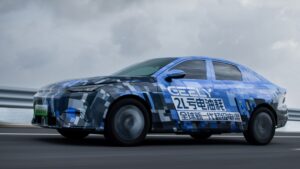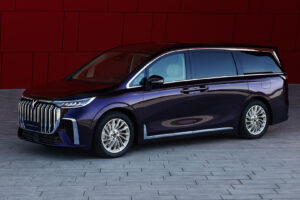Electric carmaker XPeng took the opportunity of its AI Tech Day to unveil a host of AI-driven products as it enters its second decade.

Chinese carmaker, or more accurately now Chinese technology company, XPeng, has showcased a variety of AI-driven products set to power the future of the brand at its AI Tech Day in Guangzhou.
The line-up, which includes an extended range electric drive system, a supercharged AI chip, a bi-pedal robot, and a new flying car, further muddy the waters over what a traditional car company looks like, reflecting the increasing shift towards tech-based businesses that count car making as just one arm of their business.
New AI chip
Under the theme, Technology Changes the World, the presentation revolved around the central pillar of a new AI chip, self-developed by XPeng due to being unable to find a product that suited their requirements.
The chip, named Turing after the widely recognised ‘father of modern computer science’, Alan Turing, boasts a 40-core processor that can handle 30 billion parameters locally. For the non-technically minded, of which I count myself in that club, this means it can handle 30 billion variable values without connection to a cloud server, capability needed to handle the vast complexities of autonomous driving.
XPeng describes the chip as equal to three NVIDIA Orin-X chips, or two FSD chips, and says it was able to run through the latest version of their autonomous drive function and complete 2,791 functional verifications in 40 days. More importantly, it can be used in cars, robots, and flying cars, convenient since these are the products XPeng went on to talk about.
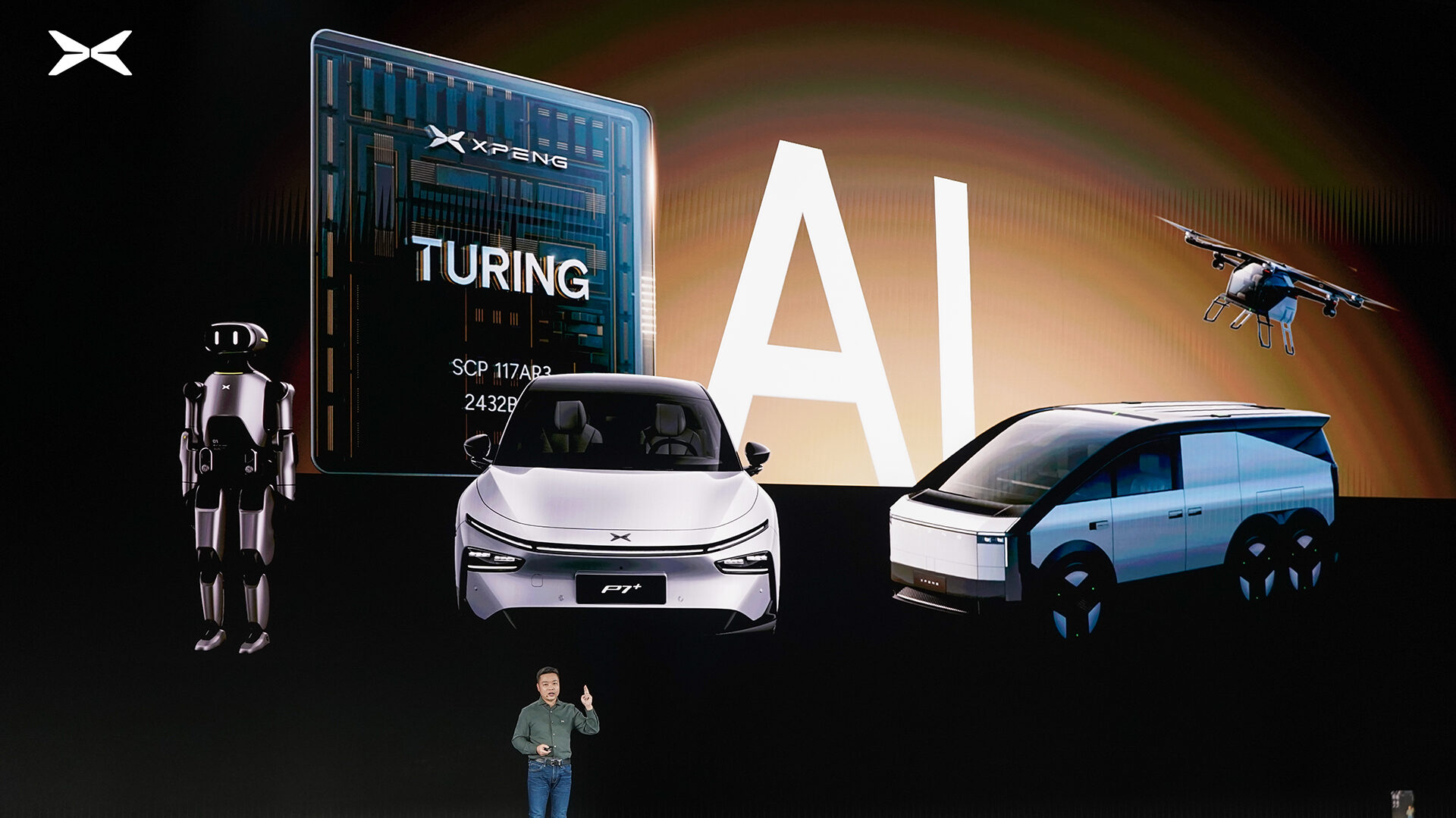
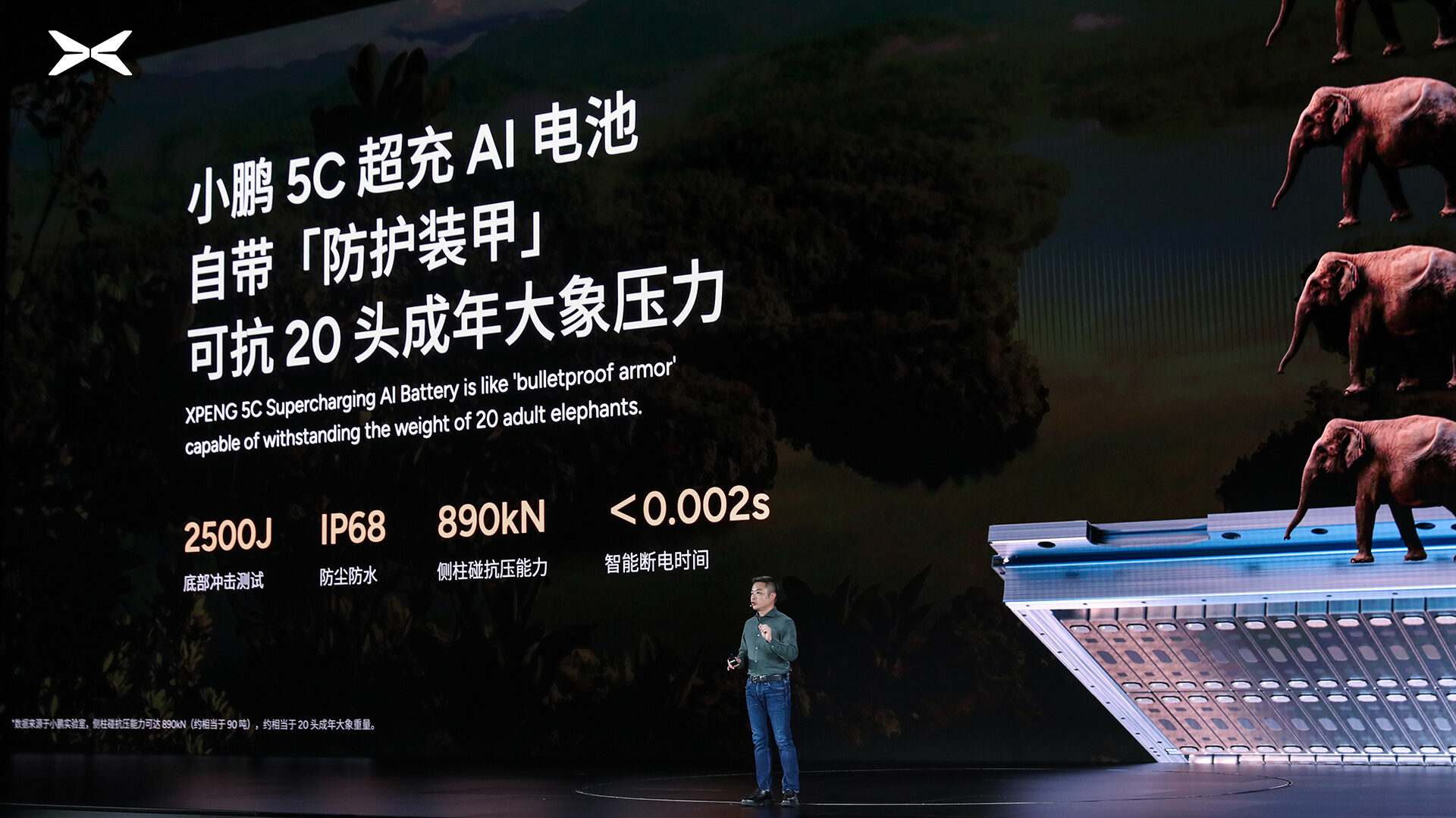
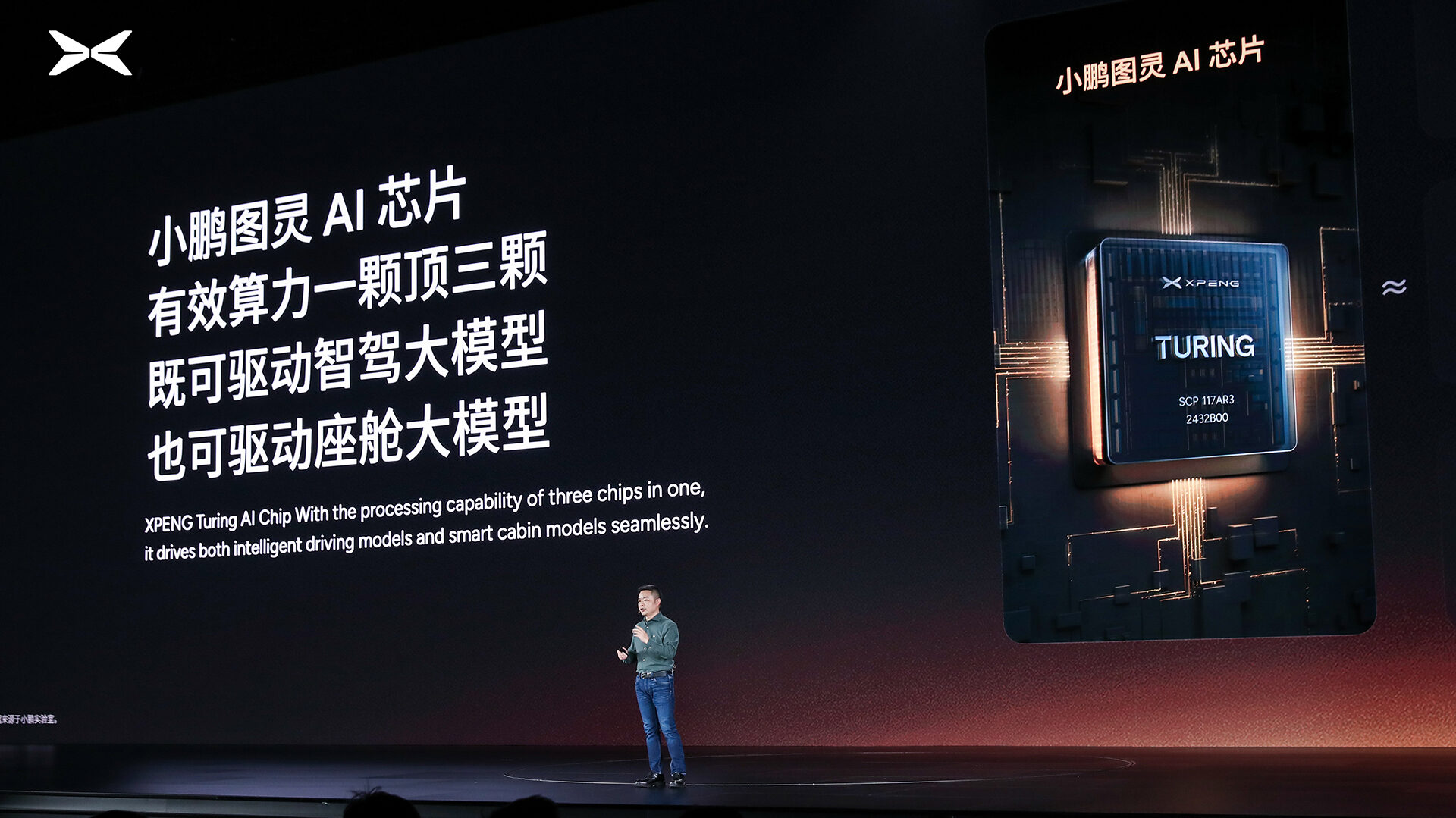
New Canghai neural network
Alongside the chip, XPeng has also developed the Canghai neural network, designed for L4 autonomous driving capability. Much like Tesla’s, this is a system that acts as the brain of their data model, essentially processing the data imported from the vehicles and refining and improving its abilities.
It’s said to increase the communication bandwidth of the vehicle by 33 times, the camera image output by 12 times, and be able to achieve L4-level safety redundancy, something XPeng plans to roll out on new ‘Ultra’ versions of their cars to sit above the Max versions.
These new editions, equipped with multiple Turing AI chips, will give vehicles up to 3000TOPS of processing power. For comparison, twin NVIDIA Orin-X chips achieve 508TOPS, suggesting Ultra models will use at least four Turing AI chips to reach this number. It’s said that these models will enable the steering wheel to become optional rather than mandatory, and that the company is working on steer-by-wire technology to make this possible. They didn’t provide a date for such a model, however.
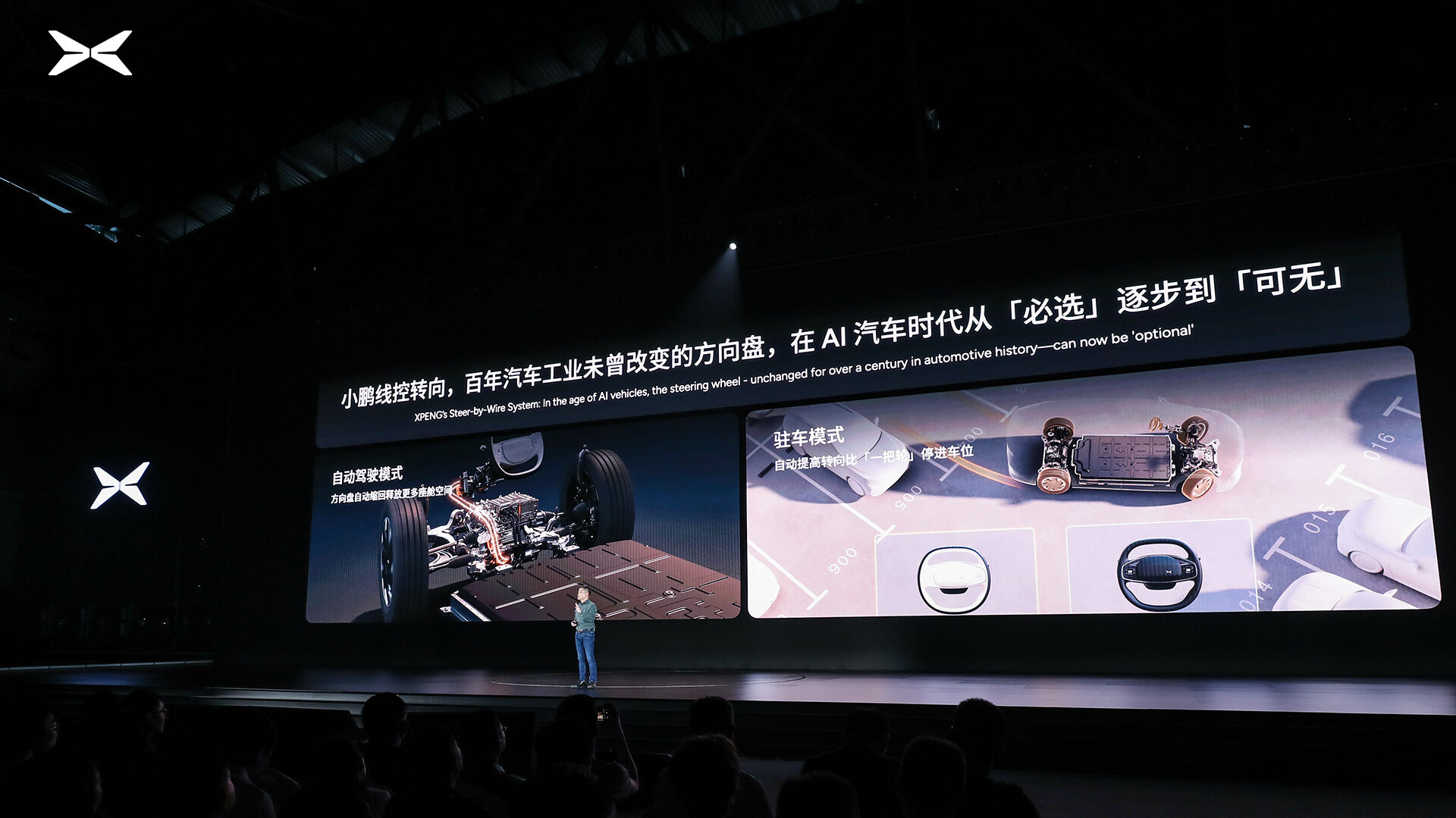
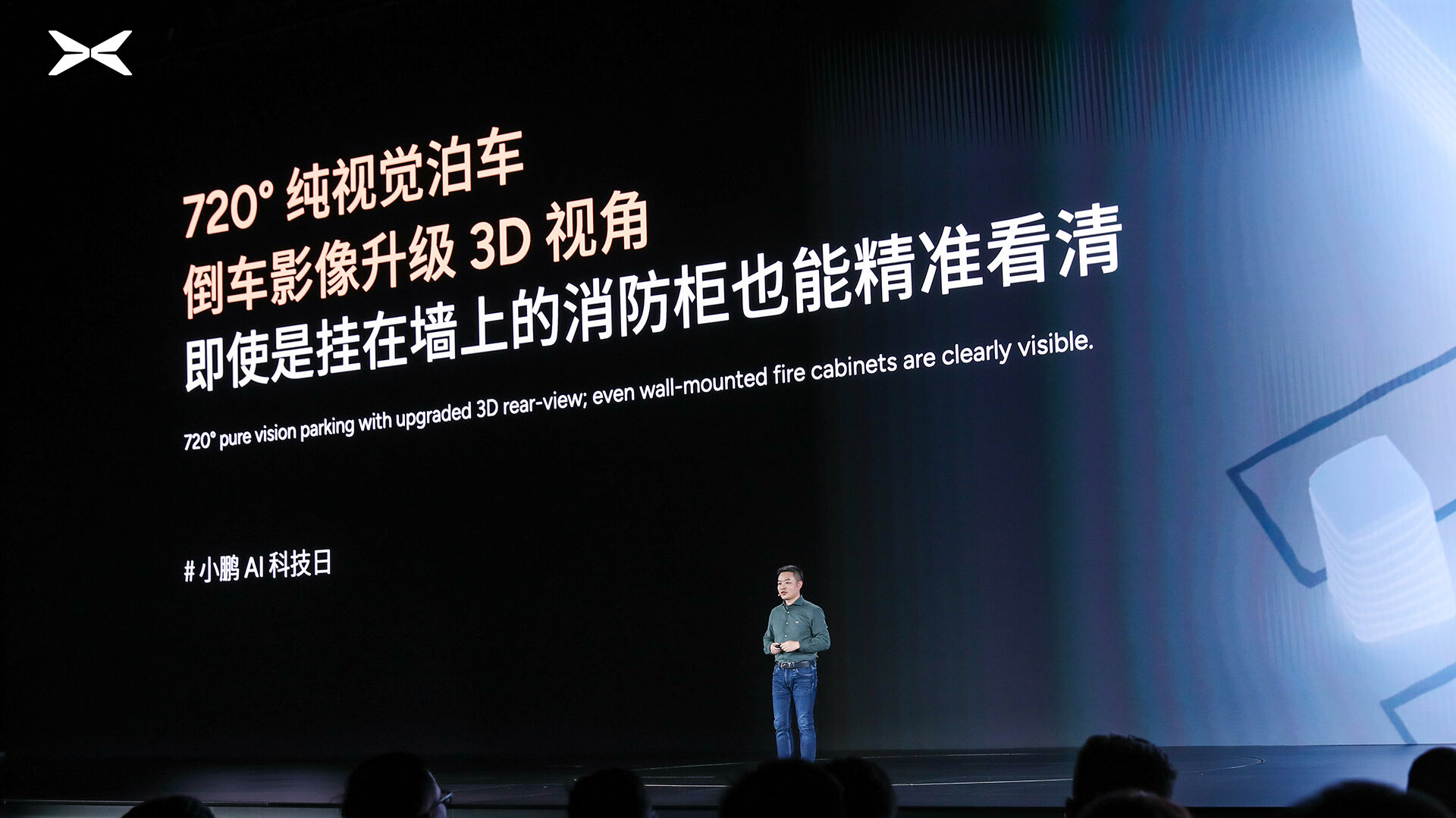
Upgraded ADAS and infotainment operating systems
XPeng says their XNGP autonomous driving system has been upgraded to XPeng Turing AI Intelligent Driving, somewhat more of a mouthful even if they shorten it to XTAIID, and this is immediately being rolled out on the XPeng P7+ which we reviewed here.
They also announced a plan to offer existing customers the chance to upgrade to their chipset to the latest model, unlocking all of the new ability in their older car.
The system will work on a crowdfunding basis, meaning 1,000 people need to sign up for the offer to go ahead. In short, customers of Pro or Plus models of the G6, G9, P7i, and X9, will be able to upgrade their single Orin-X chip to a pair, also allowing for an OTA upgrade to the Eagle Eye vision-based system on the P7+ that doesn’t require lidar. Only Max versions previously got lidar units and had urban autonomous ability. This will cost RMB 19,900 for those who opt in.
Simultaneously, they’re offering to upgrade the infotainment chips on the oldest models from the Qualcomm 820A chip to the latest Snapdragon 8295 unit, on the G3, G3i, and P7. It’s not clear if the P5 will get the same offer, but this will cost RMB 4,999 and needs 4,000 people to sign up. Both crowdfunding periods will last between November 11 and December 12.
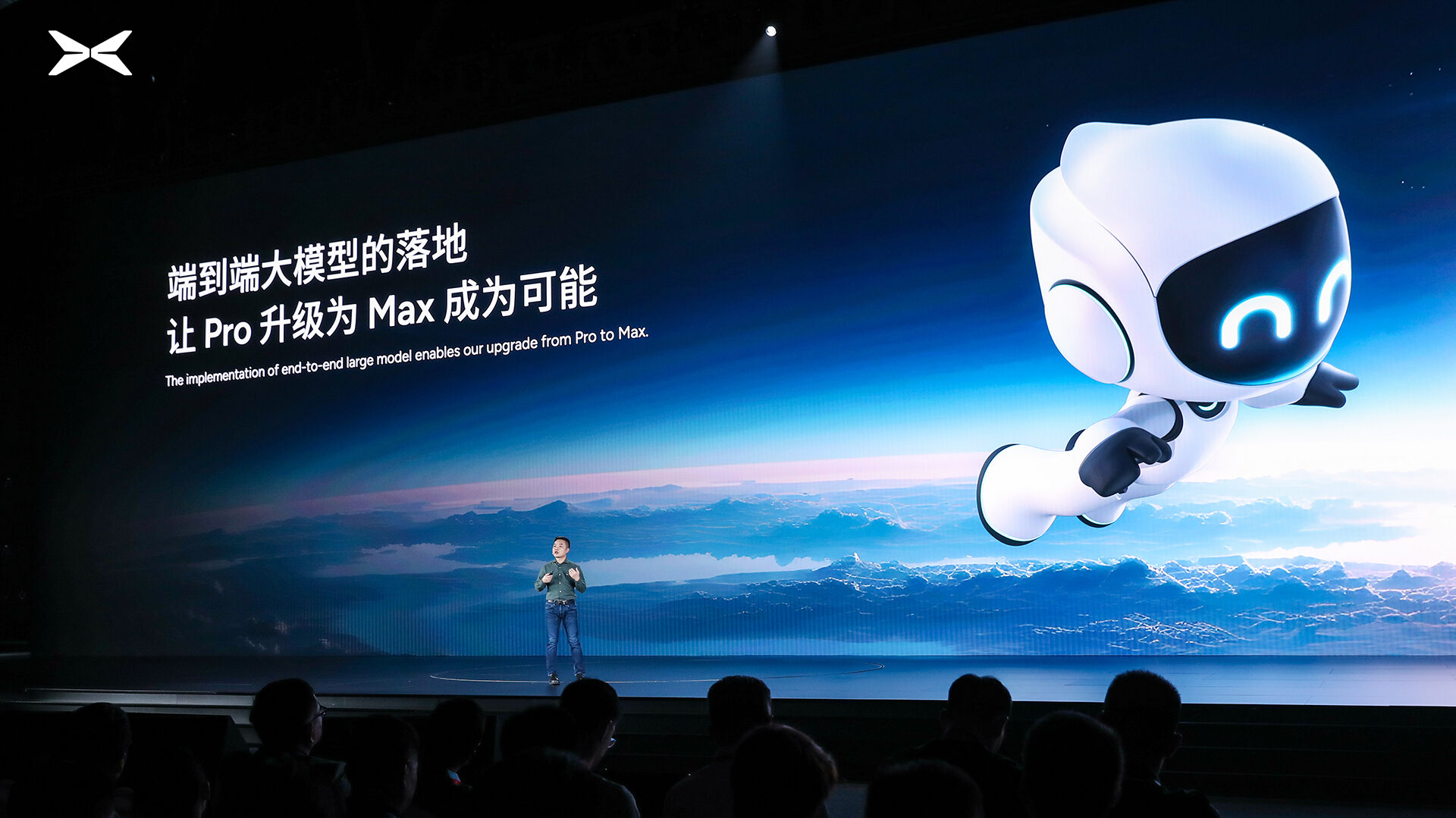
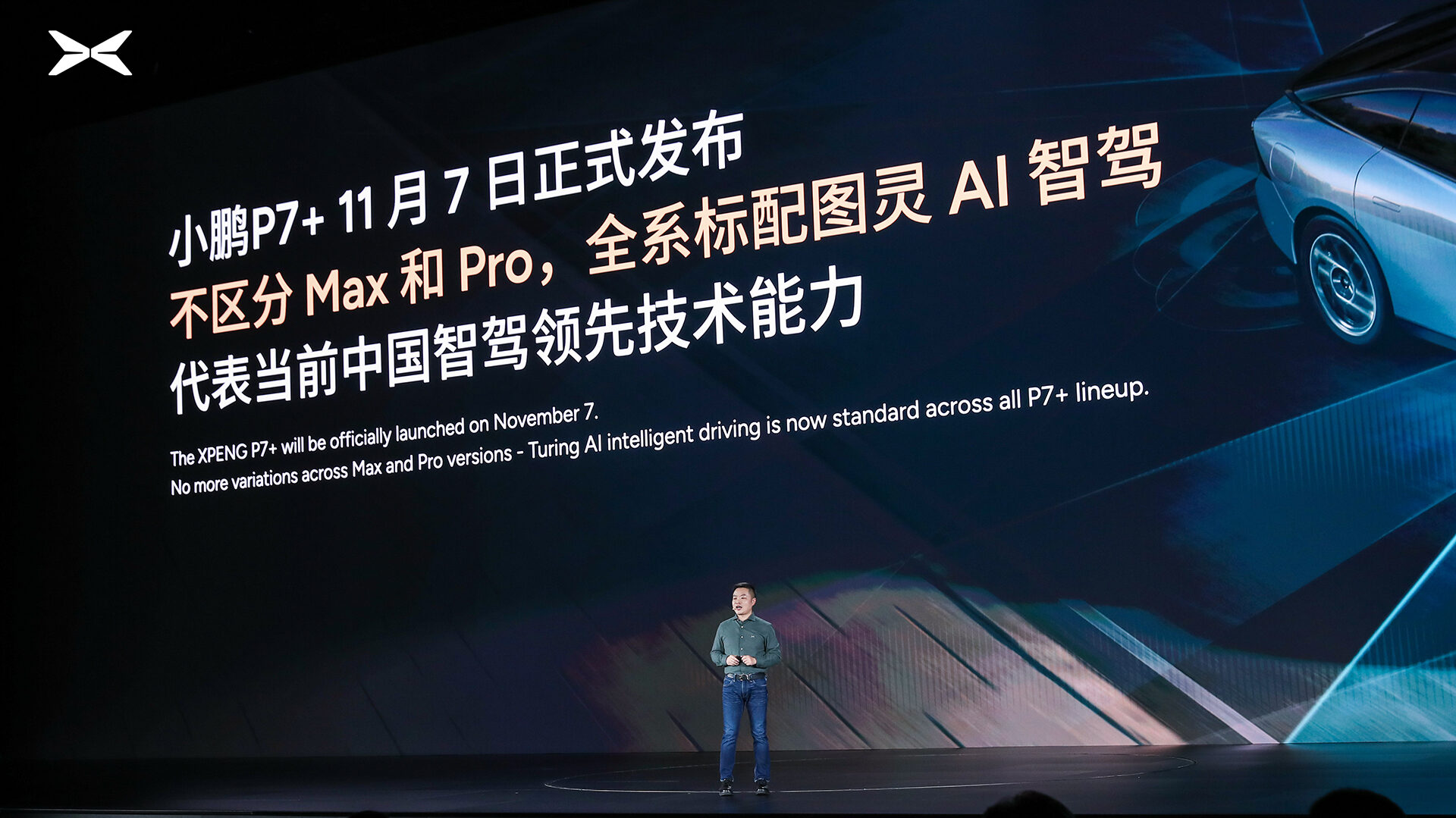
Combined with the launch of the Turing AI chips, XPeng has also launched an updated operating system, named Tianji AIOS. Driven by two chips at the same time, it will boost both the AI element of the system, enabling use of large models similar to the latest GPT-4o model, and open up a more natural and seamless human-computer interaction. It can also improve audio quality, turning two-channel audio into panoramic sound, and improving low-bitrate Bluetooth audio into high-bitrate Hifi sound quality.
More importantly for international users, it will unlock multiple language capability and allow global users to have real-time conversations in multiple languages.
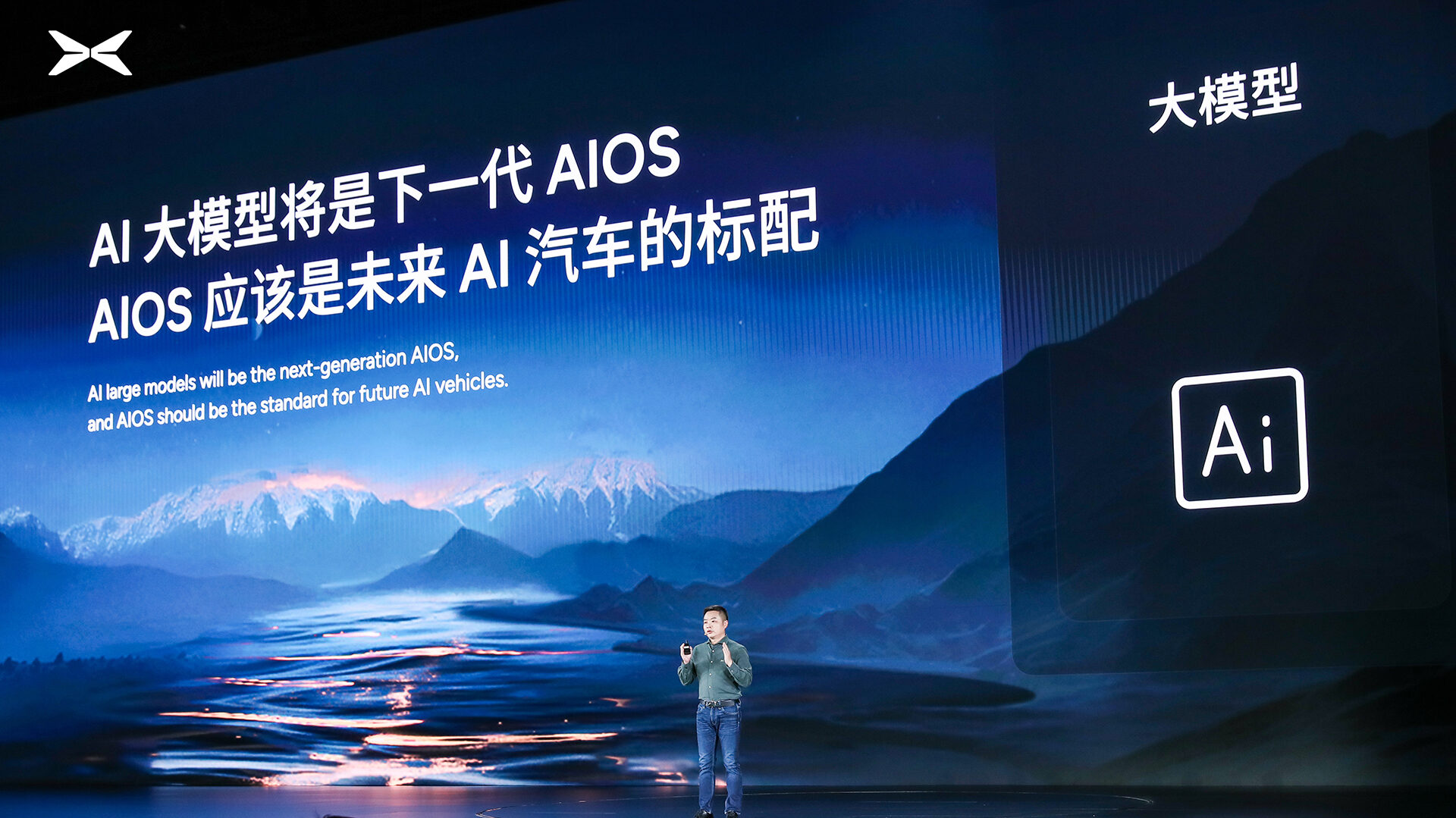
New EREV drivetrain
Much has been spoken in recent months about the rise in popularity of hybrid drivetrains among buyers not yet convinced to go fully electric, and XPeng has not been immune to this discussion. They, alongside brands like Zeekr and NIO, have been rumoured to be considering offering an extended range electric vehicle, and now it has been confirmed.
At the event, XPeng announced their Kunpeng super electric system, an extended range electric drivetrain capable of completing 430km under electric-only power and 1,400km in total. For reference, the current market leader for EREV EV-only range is the Voyah FREE with 310km
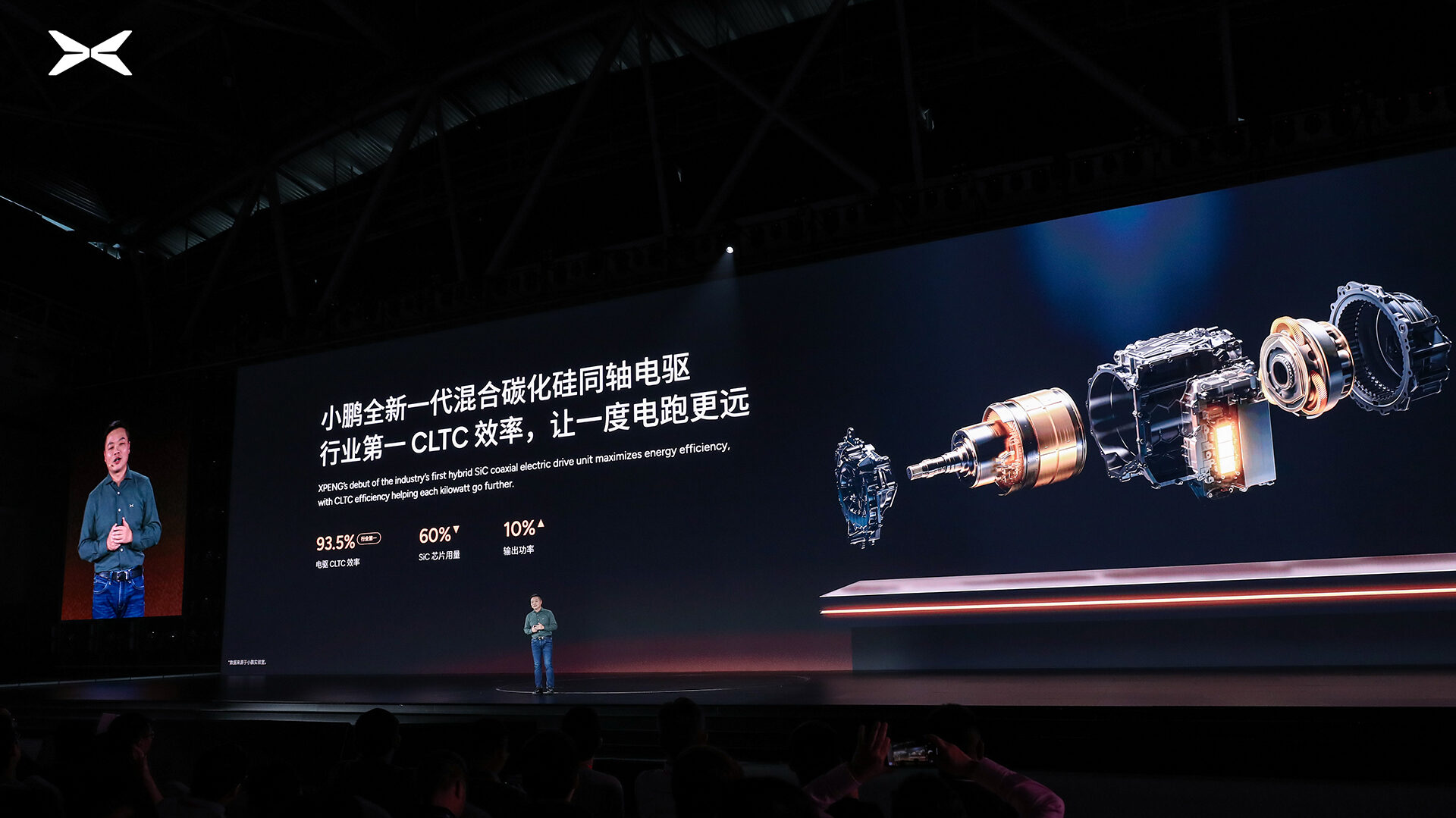
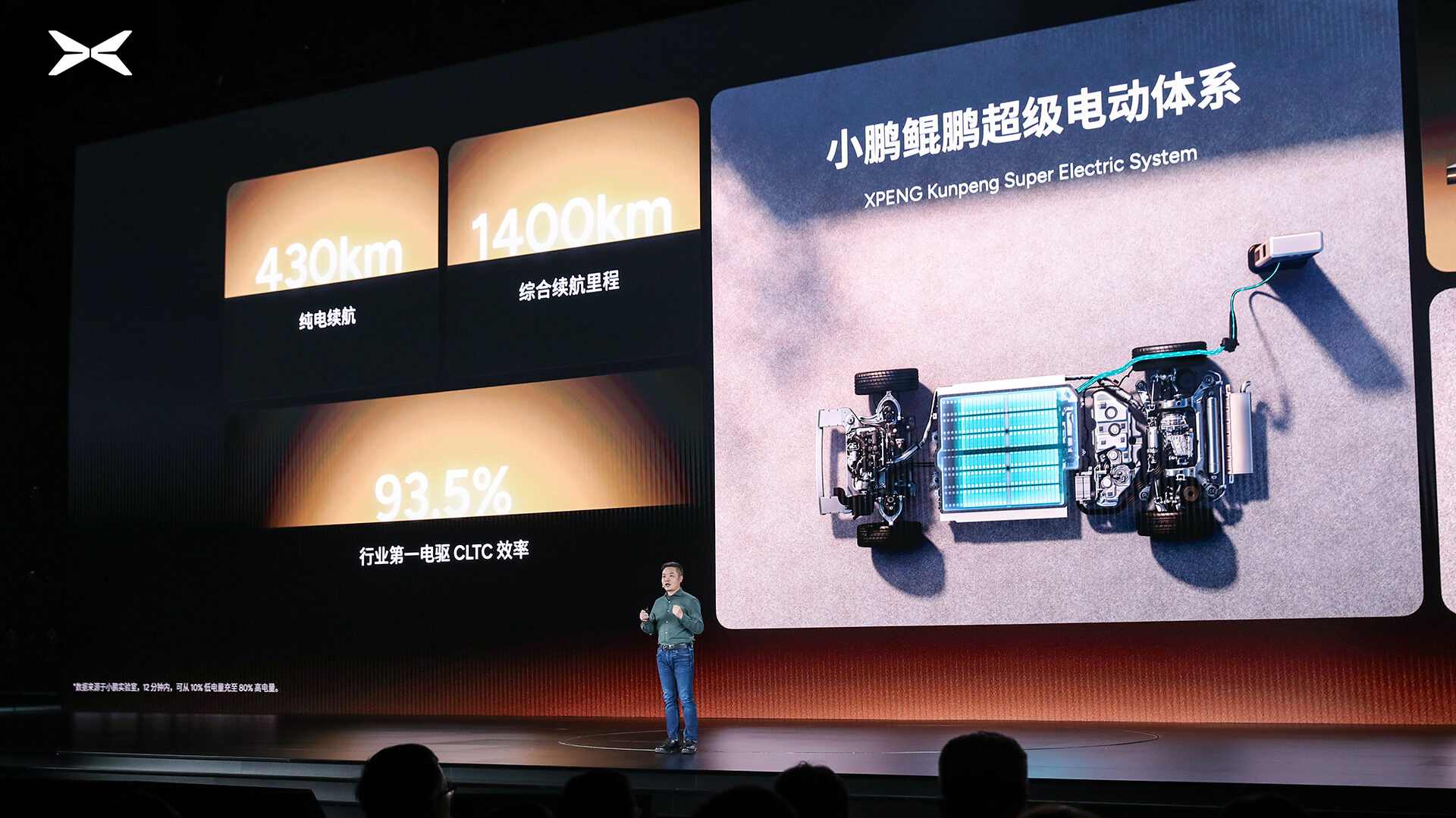
Unlike most current EREV systems, XPeng’s will be based on an 800-volt silicon carbide platform and will use a 5C-charging capable battery, enabling it to charge from 10-80% in 12 minutes. Existing systems usually can charge 30-80% in half an hour. Simultaneously, they have also developed a new hybrid silicon carbide coaxial electric motor with CLTC efficiency of 93.5% that is only one-third the size of previous motors.
XPeng claims their system is smarter than other systems because if it knows the user is in a mountainous area, it will warm the engine up ahead of time to ensure optimal performance for the inclines, thus reducing energy consumption. Equally, they claim the range extender engine will only add one additional decibel to the operating noise, something Li Auto claims already with its EREV system and something that surely is more to do with the sound insulation and engine mounting than anything else.
So why is XPeng going to offer EREV models now? Their claim is that other countries have far less developed EV charging infrastructure, with worldwide charging piles at 2.8 million at the end of last year, less than a third of China’s total, which has no doubt increased since. As such, and given the challenging topography of some locations, EREV models provide greater flexibility to customers in poorly serviced areas while, in XPeng’s case, still giving a large range of EV-only operation which should encourage users to plug in more.
On that note, XPeng will also accelerate the rollout of its S5 charging stations with maximum charging power of 960kW, capable of charging eligible cars at more than 1km a second. XPeng already has 1,641 self-operated stations in China, 1,307 of which are of the supercharging variety, and aims to launch more globally in 2025.
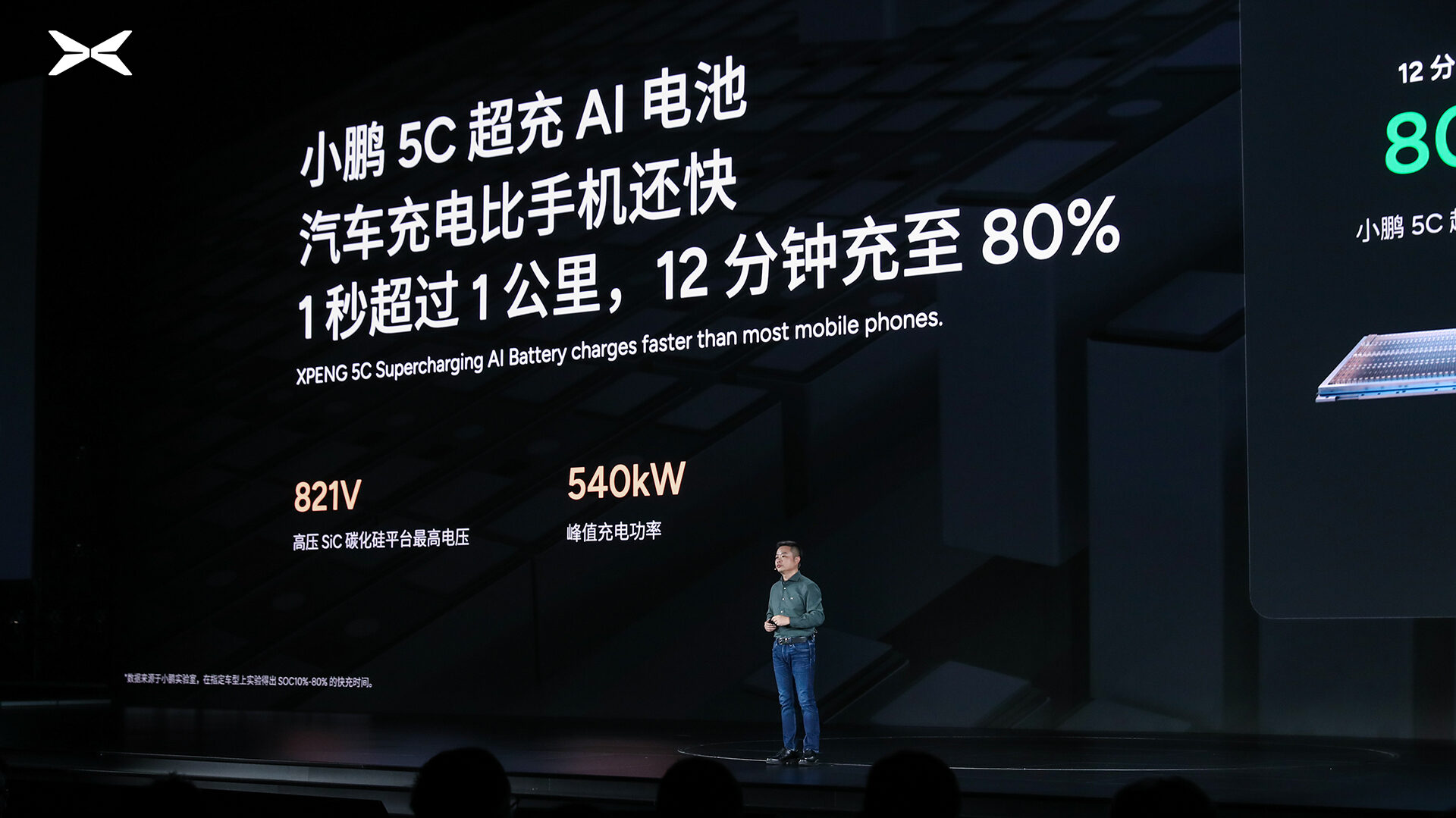
New robot
A new field for XPeng is that of bipedal robots, and much like Tesla’s Optimus, XPeng has revealed their new robot, Iron, has begun work already in their factories.
Matching the proportions and body-size of a human with a height of 178cm and weight of 70kg, Iron features more than 60 joints and can simulate human standing, sitting, and lying, and features hands with 15 degrees of freedom. The new generation of micro finger joints boasts a 20% increase in torque density compared to the previous generation that we hadn’t previously heard about. They can now support tactile feedback too, enabling them to feel like humans.
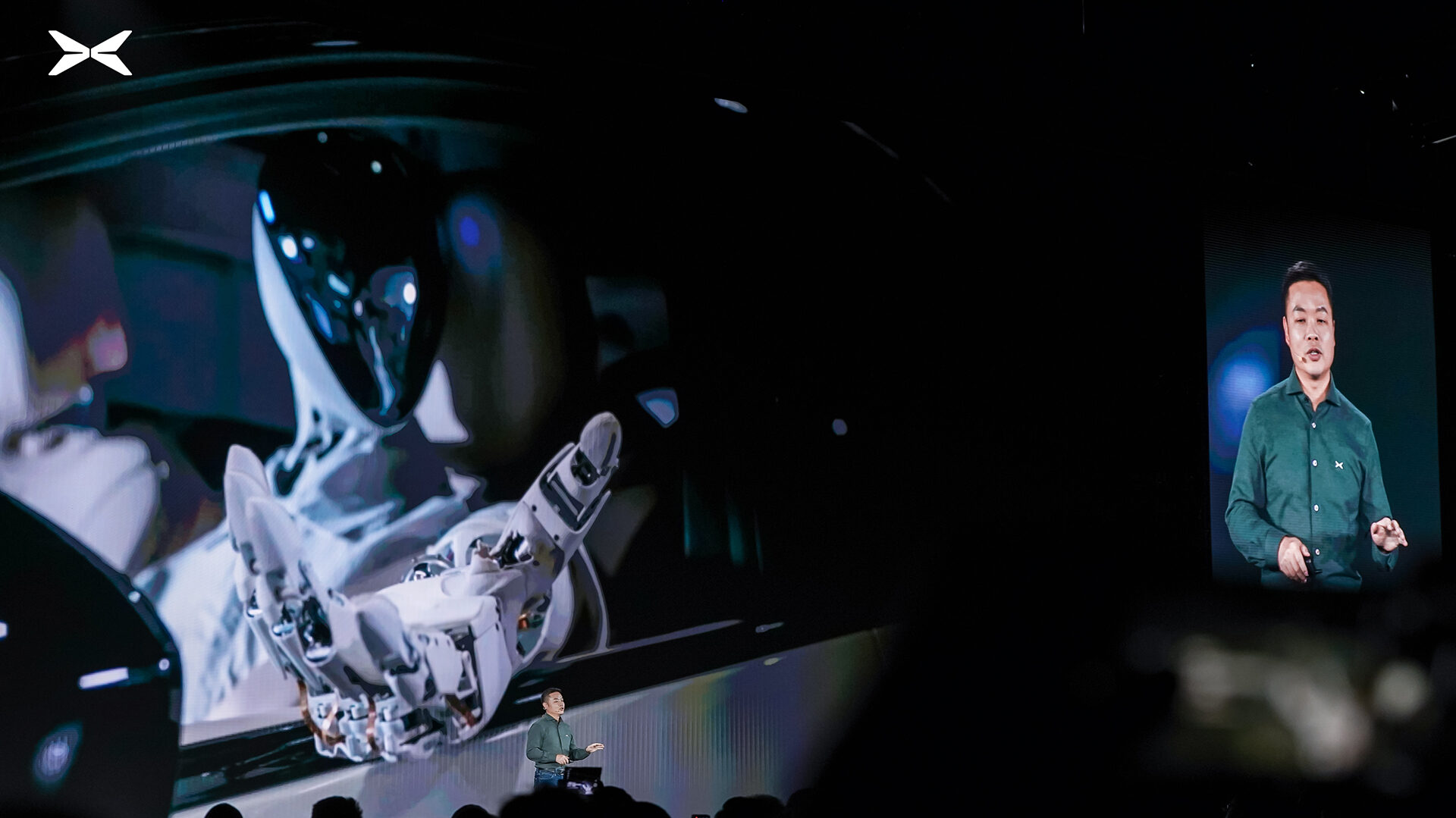
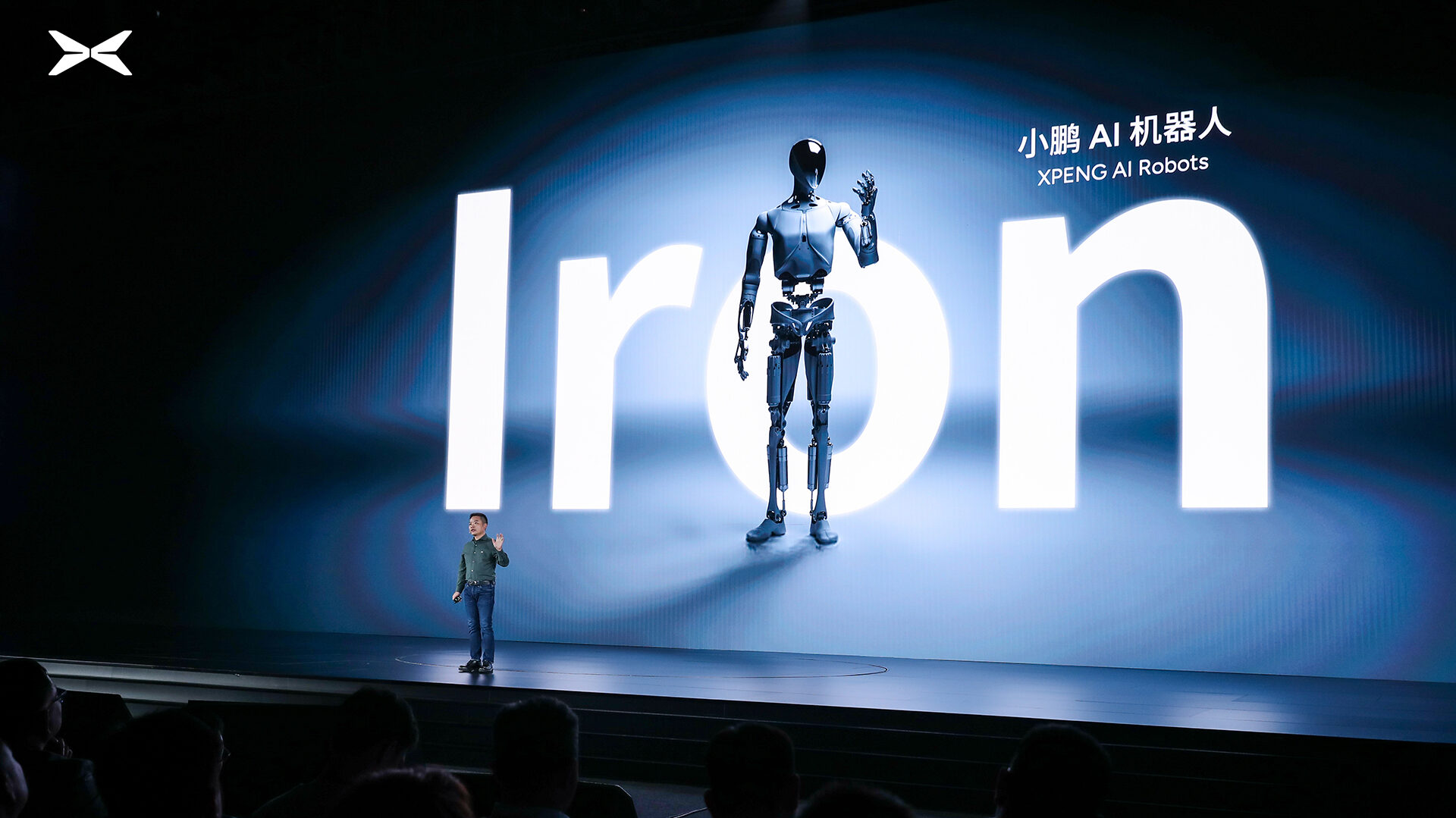
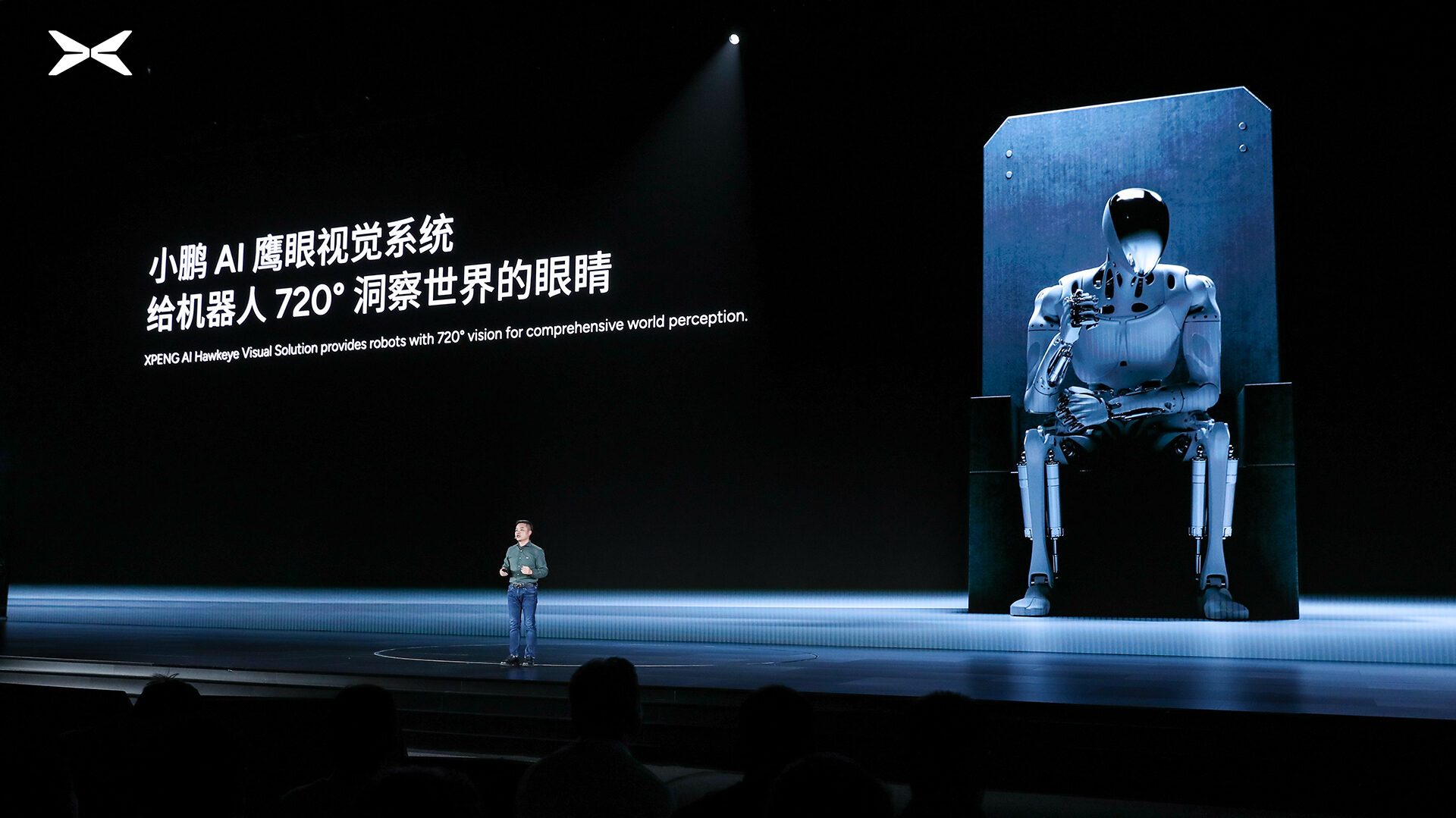
Also utilising the Turing AI chip, Iron can reportedly think and reason independently, as well as walk, grasp and place items, and in the presentation shown was holding an electric screwdriver.
XPeng CEO, He Xiaopeng, said of the robots: “It is more difficult to make AI robots than AI cars. It requires AI capabilities, chip research and development, and hardware development capabilities. At the same time, it is impossible to make AI robots well without an investment of 50 billion yuan.” Despite this, he believes they will soon be used in stores, offices and homes and become integrated into our daily lives.
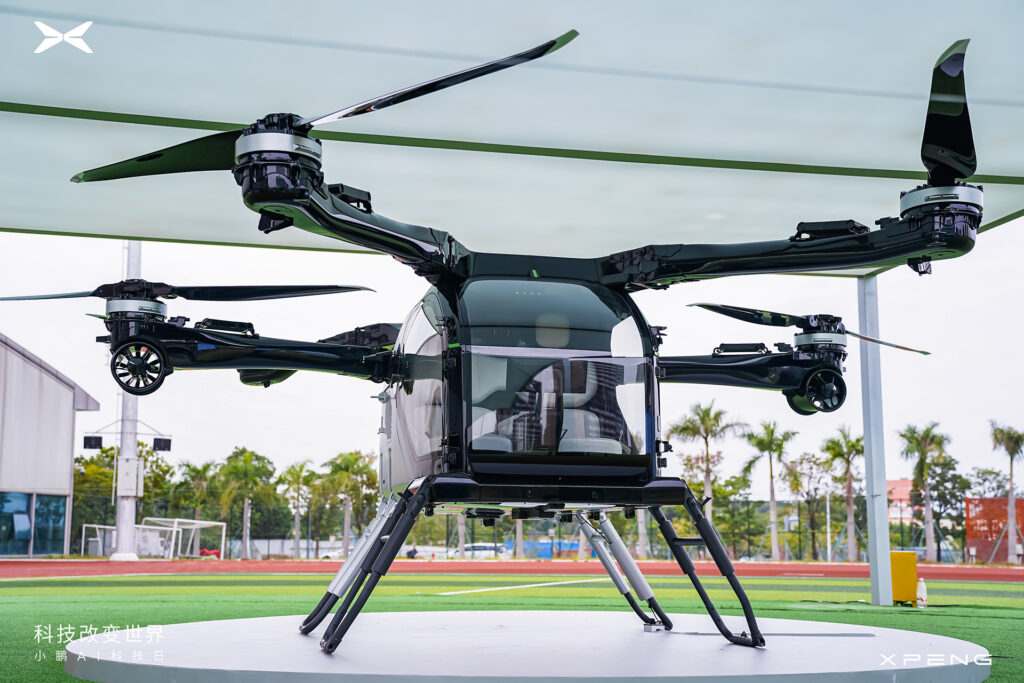
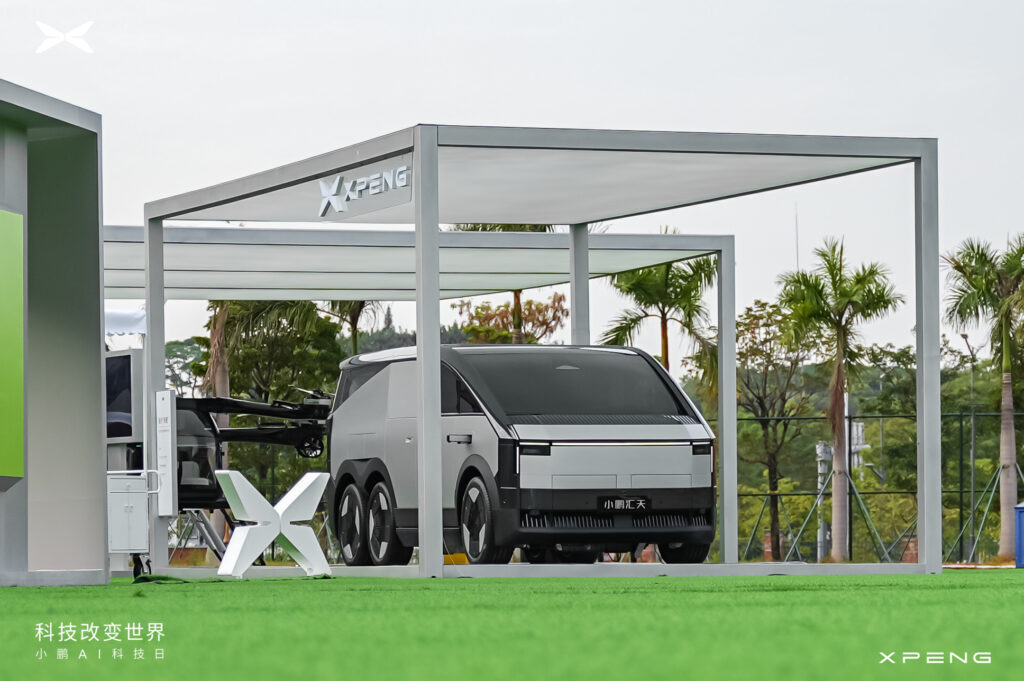
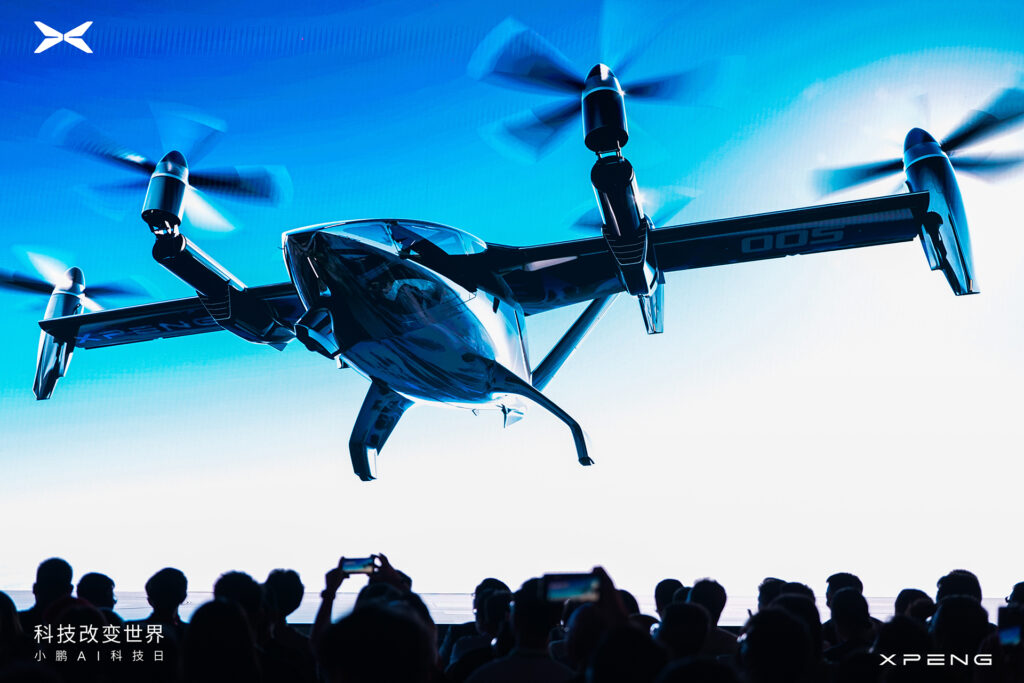
New flying car
Finally, XPeng also announced another new flying car, in addition to the modular two-seater flying pod that comes with the Land Aircraft Carrier which will see official pre-sales begin in December. That model will make its first public flight at the China Air Show next week, and is due for mass-production and delivery in 2026 at a maximum price of RMB 2,000,000.
The new flying car, which was only shown in a video, will feature a six-seater cabin and hybrid energy form, suggesting electric and some kind of combustion as a support. It’s claimed that it will be able to fly as far as 500km and achieve a top speed of 360kph, making it a viable alternative even to today’s high-speed rail services.
Equipped with the Turing AI chip, it will be the industry’s first such vehicle to use a single-level control system, shorthand for only requiring one joystick. XPeng claims it is so simple to use that it takes just five minutes to learn and three hours to master.
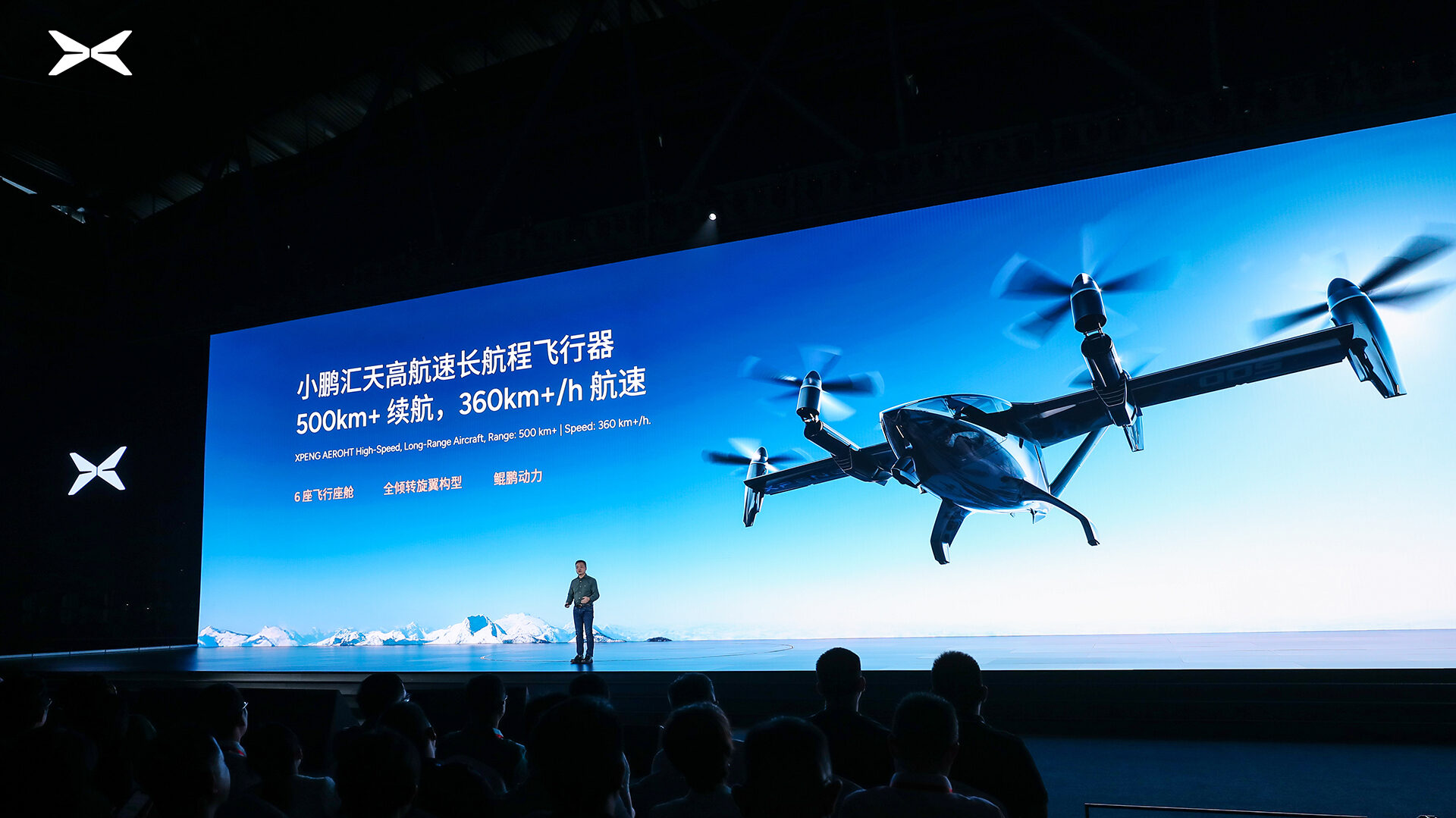
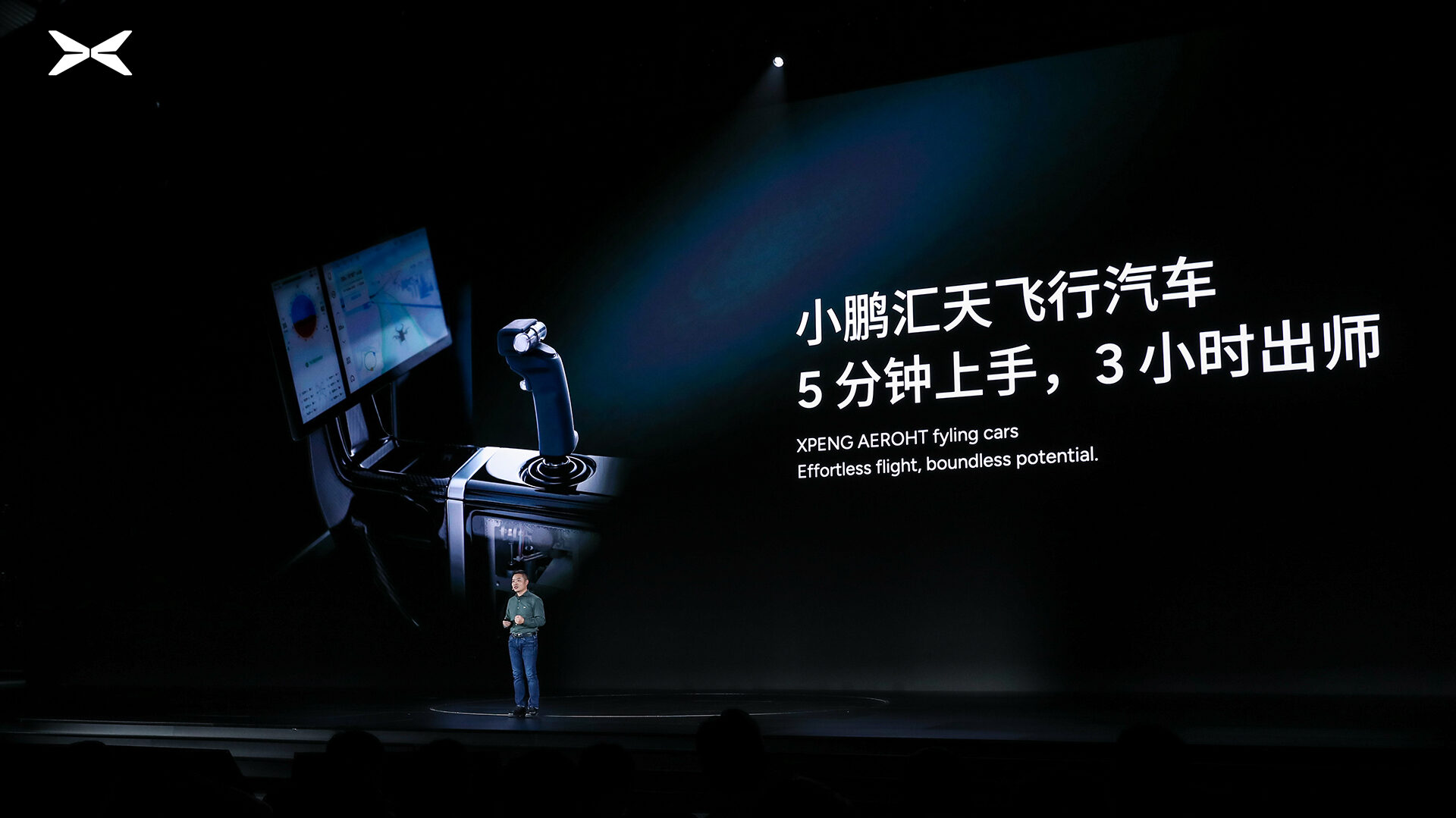
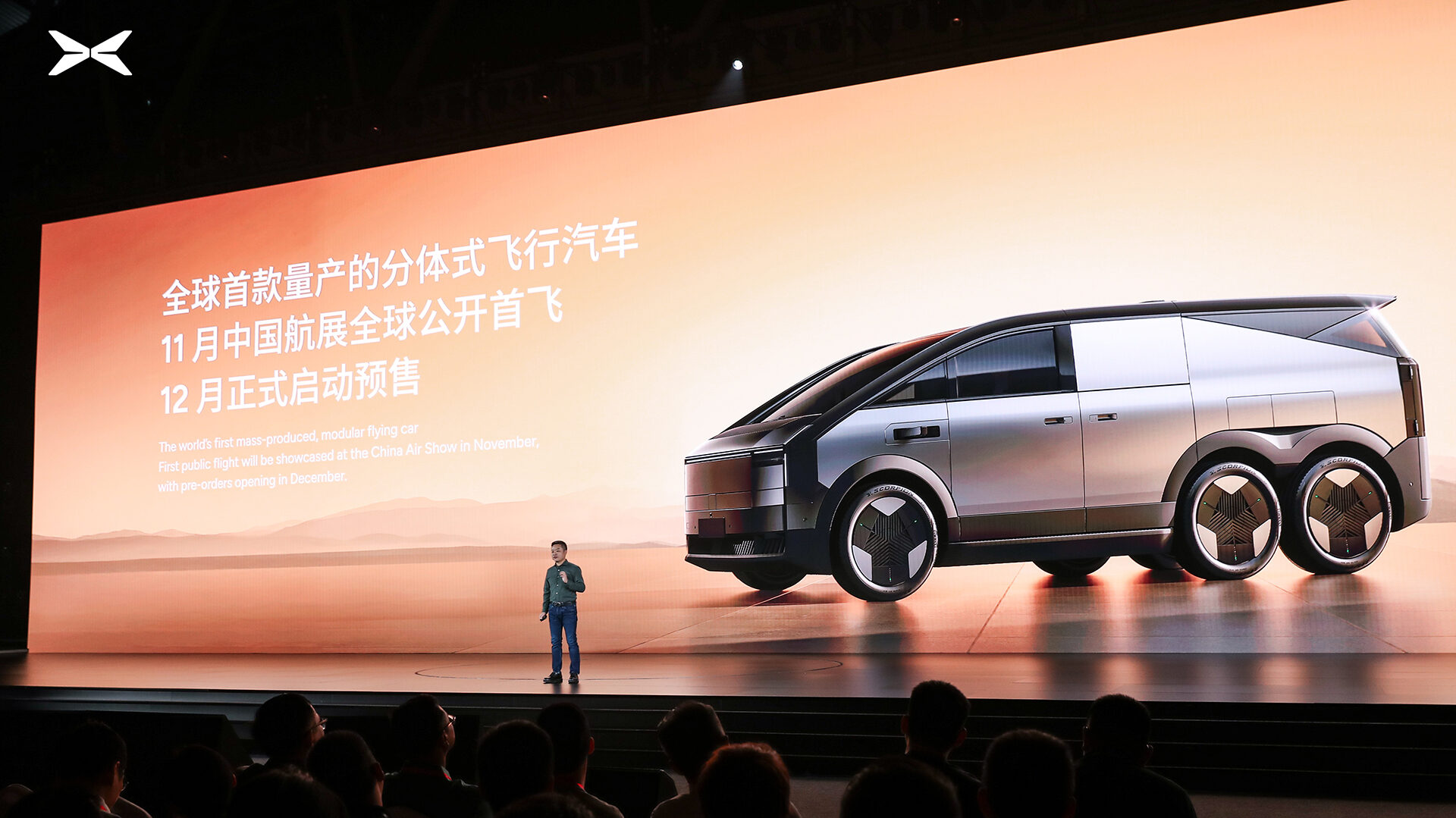
Editor’s Note
XPeng has been on something of a rollercoaster ride over the past three years, at times making questionable decisions that haven’t always made their life easy. It’s felt very much like a new brand finding their feet in a complicated world and even this year, things weren’t looking too optimistic for the first eight months.
That narrative appears to have turned a corner with the introduction of the MONA M03 and P7+ models, which, at least on early indications, offer a path to reaching a better percentage of their annual sales target. The introduction of their 800-volt platform last year has likely also helped stabilise the ship, giving them a solid basis on which to launch multiple models of various sizes, rather than the somewhat botched and confused efforts of their earlier David and Edward platforms.
This presentation very much charts a confident projection for the next ten years and firmly cements XPeng no longer as just a maker of electric cars, but as a technology company in general, something which seems set to become a major factor in the new era of the automobile. Self-developing chips, building AI neural networks, and even advancing flying cars, are not things you could imagine brands like Toyota or Volkswagen working on today.
As for the somewhat regressive step towards EREVs, that can be taken two ways. For some, it’ll be taken as a negative move and a dent in the electric vehicle movement. For others, it’s simply smart business, a reflection of the emerging trends and a possible necessary step to stay in business in a very competitive space. You can think of drivetrains as a bell curve, with petrol and diesel at one end, full EVs at the other, and hybrids in the middle.
There will always be the pioneers who jump to the newest technology but a large bunch of people just need to get there in manageable steps, and EREVs are a great way to do it. On paper at least, XPeng’s looks like the best such system out there for EV-only range. Time will tell, but the era of the EREV feels very much upon us.
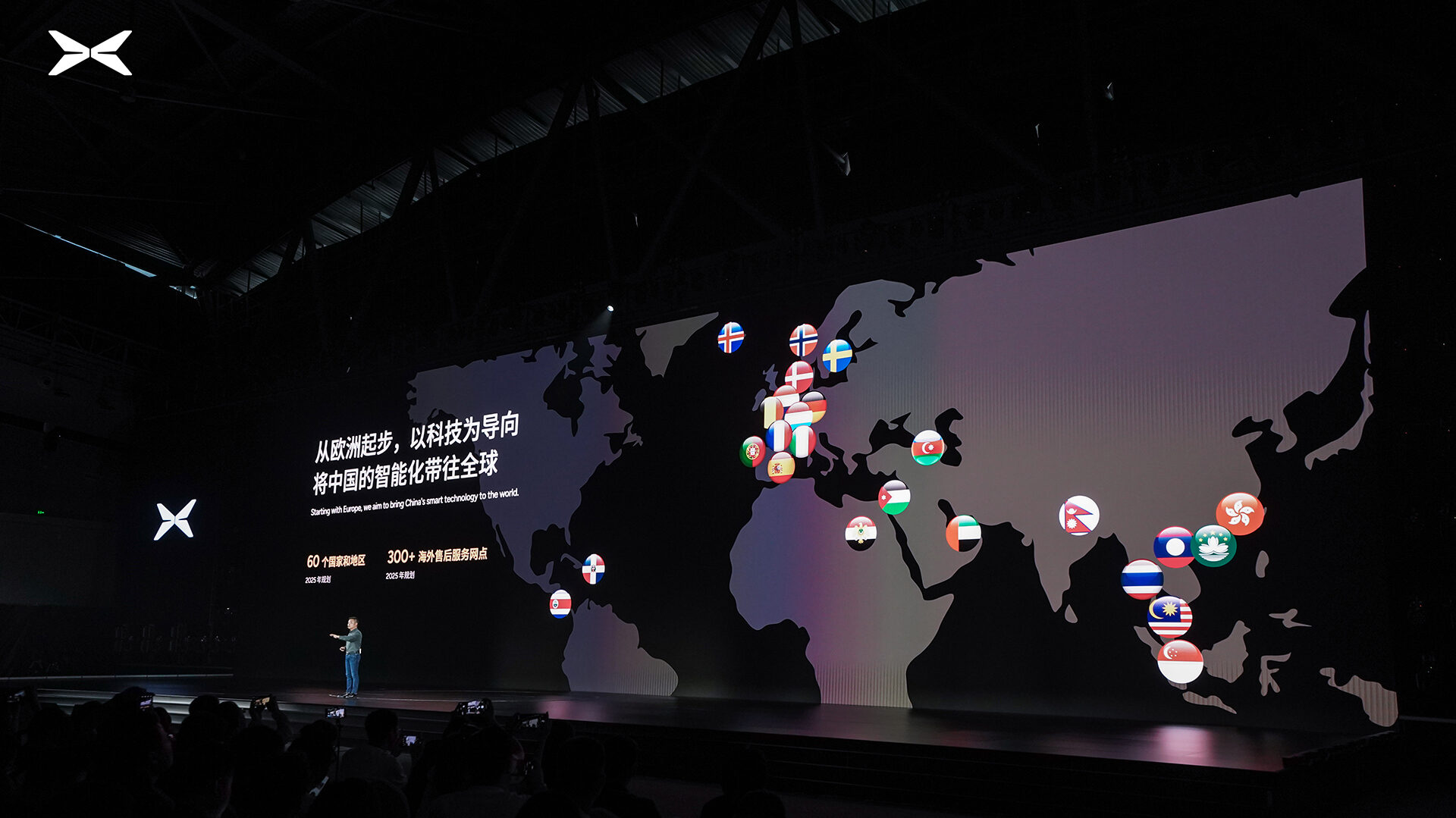
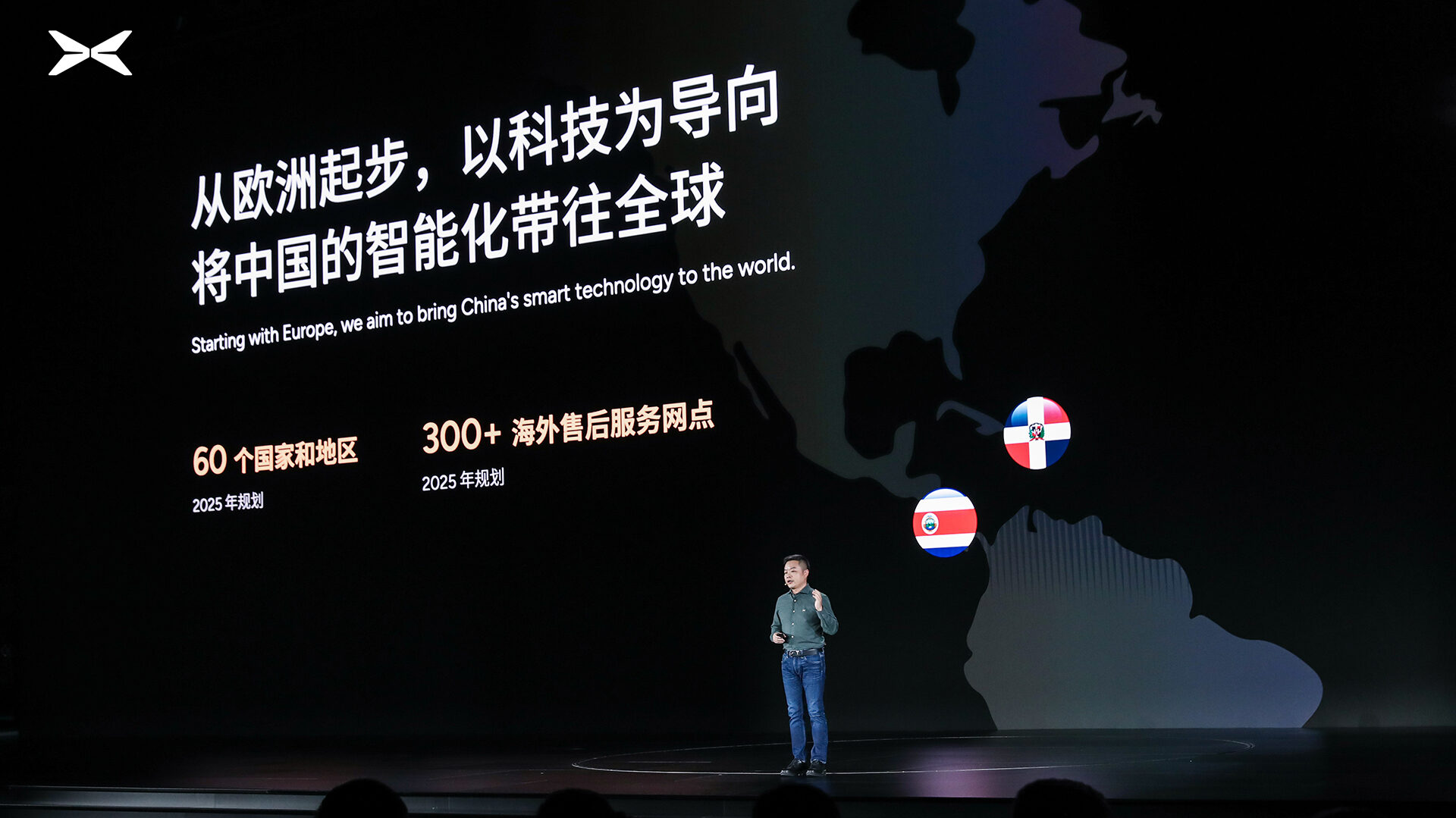
As an aside, and possibly actually as a reflection of the value of flexibility in drivetrain choice, XPeng confirmed they are now present in 30 countries and operate 145 overseas after-sales service points, with plans to expand to 60 countries and over 3000 service points in 2025. EREVs might just help them grab a few more customers in those markets. They’re doing pretty well already though, ranking first place in the sales of mid-to-high-end (models over €40,000) Chinese pure electric brands in Europe in 2024.


